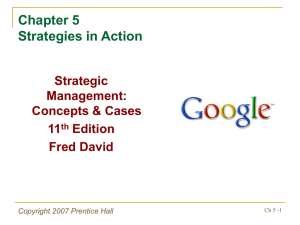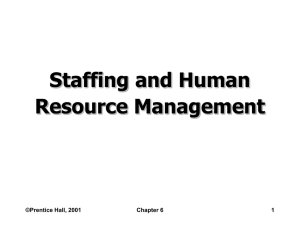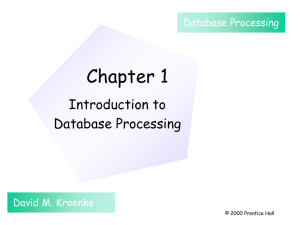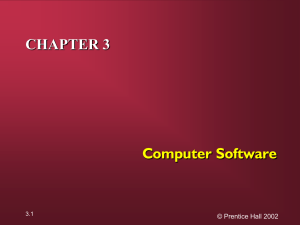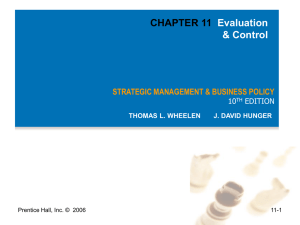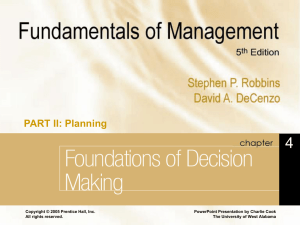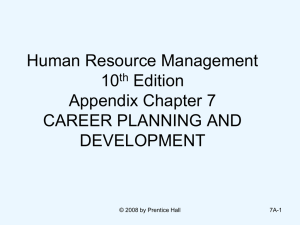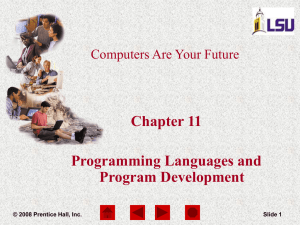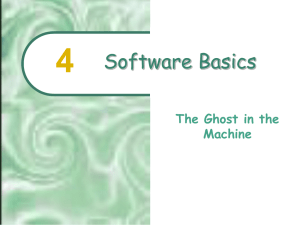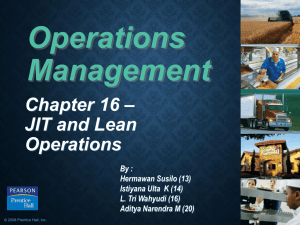Organizational Behavior _ Chapter 8
advertisement
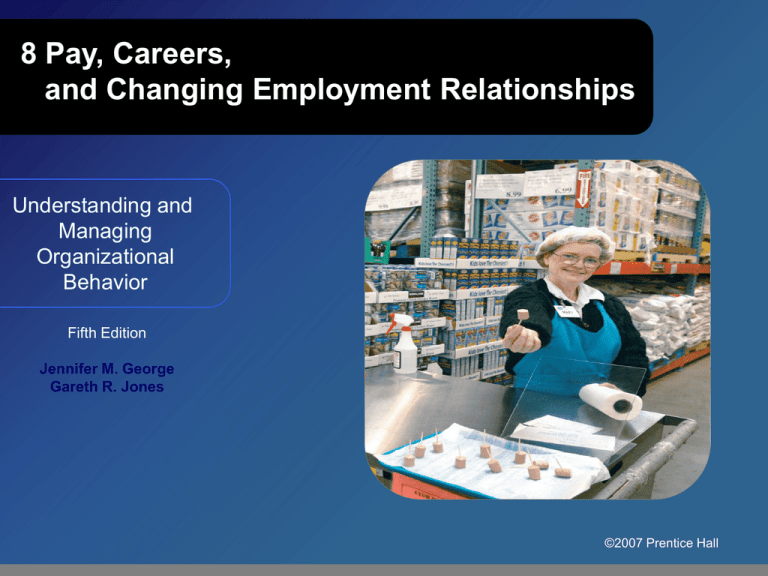
8 Pay, Careers, and Changing Employment Relationships Understanding and Managing Organizational Behavior Fifth Edition Image from opening case Jennifer M. George Gareth R. Jones ©2007 Prentice Hall Learning Objectives Describe the determinants and types of psychological contacts and what happens when they are broken Appreciate the two major roles of performance appraisal Understand the different kinds and methods of performance appraisal 8-2 ©2007 Prentice Hall Learning Objectives Appreciate the importance of merit pay and the choices organizations face in using pay to motivate employees Understand the importance of careers, different kinds of careers, and effective career management 8-3 ©2007 Prentice Hall Valuing Employees at Costco Can organizations treat their employees very well and still remain competitive? Competitive pay Health insurance 401(k) retirement plan 8-4 ©2007 Prentice Hall Psychological Contract An employee’s perception of – his or her exchange relationship with an organization, – outcomes the organization has promised to provide to the employee, and – contributions the employee is obligated to make to the organization 8-5 ©2007 Prentice Hall Sources of Information Direct communication from coworkers and supervisors Observations of what actually transpires in the organization Written documents 8-6 ©2007 Prentice Hall Exhibit 8.1 Determinants of Psychological Contracts Direct Communication Observation Written Documents Psychological Contract 8-7 ©2007 Prentice Hall Exhibit 8.2 Types of Psychological Contracts Transactional Contracts: Short term Narrow and specific Limited promises and obligations 8-8 Relational Contracts: Long term General and evolving Extensive and broad promises and obligations ©2007 Prentice Hall Consequences of Broken Contracts Poor motivation and performance Negative moods and emotions Job dissatisfaction Intent to quit 8-9 ©2007 Prentice Hall Performance Appraisal Encourage high levels of employee motivation and performance Provide accurate information to be used in managerial decision making 8-10 ©2007 Prentice Hall Information Provided to Employees Level of contribution Accuracy of tasks and direction Performance appraisals give employees feedback that contributes to intrinsic motivation! 8-11 ©2007 Prentice Hall Information Functions Developmental purposes Evaluative, decision-making purposes 8-12 ©2007 Prentice Hall Developing a Performance Appraisal System Choice 1: The mix of formal and informal appraisals Choice 2: What factors to evaluate Choice 3: Methods of appraisal Choice 4: Who appraises performance 8-13 ©2007 Prentice Hall Factors to Evaluate Traits Behaviors 8-14 Results ©2007 Prentice Hall Methods of Appraisal 8-15 Objective: Subjective: numerical counts based on fact perceptions based on traits, behaviors, and results ©2007 Prentice Hall Exhibit 8.4 Graphic Rating Scale 8-16 ©2007 Prentice Hall Exhibit 8.4 Behaviorally Anchored Rating Scale 8-17 ©2007 Prentice Hall Exhibit 8.4 Behavioral Observation Scale 8-18 ©2007 Prentice Hall Who Appraises Performance? Supervisors Subordinate appraisals Self-appraisals Customer/client appraisals Peer appraisals Multiple raters 360-degree appraisal 8-19 ©2007 Prentice Hall Problems and Biases Stereotypes Primacy effect Contrast effect Halo effect Similar-to-me effect 8-20 Harshness, leniency, and average tendency biases Knowledge-ofpredictor bias ©2007 Prentice Hall Merit Pay Plans Use when – Individual performance can be accurately assessed – Employees are highly independent Distribute by – Salary increase – Bonuses 8-21 ©2007 Prentice Hall Individual-Based Merit Pay Plans 8-22 Piece-rate Commission pay pay ©2007 Prentice Hall Gain-Sharing Employees receive share of profits or saved expenses – Encourages camaraderie and team spirit – Discourages personal motivation Types – Scanlon plan – Profit sharing 8-23 ©2007 Prentice Hall Pay Differentials and Comparable Worth Gender Age Race Leadership level 8-24 ©2007 Prentice Hall Types of Careers 8-25 Steady-state Spiral Linear Transitory ©2007 Prentice Hall Exhibit 8.6 Career Stages Preparation for Work Organizational Entry Early Career Mid-Career Late Career 8-26 ©2007 Prentice Hall Contemporary Career Challenges Ethical Career Management Career Management That Supports Diversity Career Management in an Era of DualCareer Couples 8-27 ©2007 Prentice Hall
